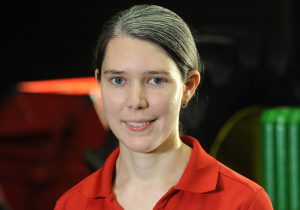Agronomy, Conservation, Homepage Slider, Soybean Quality
Soybean research addresses some of the challenges of 2019
By Dusty Sonnenberg, CCA, Ohio Field Leader
There were plenty of challenges for soybeans in 2019 and, fortunately, there are numerous research projects seeking some solutions.
Research has consistently shown the importance of planting date. In some cases in Ohio in 2019, planting date did not hurt final yields as much as would be expected due to a late frost and consistent moisture. This does not diminish the importance of planting dates for soybeans.
“Planting date is still the number one factor that influences soybean yield,” said Laura Lindsey, Ohio State University Extension soybean specialist. “You don’t want to push it too early, because there can be issues on that end.”

Research has consistently shown a yield reduction from late planting ranging from 0.25 to 1 bushel per acre per day depending on row width, date of planting, and variety. In southern Ohio, soybeans should be planted any time after April 15 when soil conditions are suitable. In northern Ohio, soybean planting can begin the last week of April if soil conditions are suitable. Soybeans should not be planted until soil temperature reaches 50 degrees Fahrenheit and moisture is present at planting depth. Planting too early, or when conditions are not adequate, comes with risk such as damping-off, bean leaf beetle, and late spring frosts.
Another consideration is the seeding rate.
“There was supposed to be a planting date and seeding rate combined study this year, but the wet weather prohibited it from happening, so it has been pushed back until 2020. What the research has shown so far is that for a final stand count in the fall, you want 100,000 plants per acre in May planted soybeans at harvest, so whatever it takes backing it up to planting population and emergence is what is needed,” Lindsey said. “For later planted soybeans, or double-crop beans, that number would be higher.”
Row-width also had an impact in 2019 and will be an important factor to consider in 2020.
“There was a nationwide study on row width. The 15-inch beans out-yielded the 30-inch beans. That effect is more when you plant late,” Lindsay said. “We have an on-farm study where we are also looking at different soybean seeding rates, and plant-to-plant spacing as it relates to soybean thinning. Soybean plant-to-plant spacing does affect thinning. Soybeans will naturally thin. The question is how it impacts final yield.”
Research is showing that using cover crops has multiple benefits in soybean production as well.
“We have a research project looking at cover crops in continuous soybeans and if a grass cover between soybean plantings helps or not,” she said. “So far, the cover crop did have a 5- to 10- bushel per acre positive impact on the soybean yield in 2018. We will see how the 2019 results come in.”
There has also been some research looking at different maturities of soybeans.
“We conducted a study in 2017 and 2018 to evaluated soybeans all the way from a Group 0 soybean to a Group 4. The Group 0 beans were short, thin, and spindly; they flower much earlier. One year we evaluated Group 0 to Group 7. The Group 7 beans got really tall and fell over. Anything above a Group 5 was killed off by the frost,” Lindsey said. “I think farmers can plant earlier maturity beans — 2.5 to 2.7 — and still yield similar to a later bean. This can be a great risk management tool if we have falls that continue to be like 2018, later and wet.”
Lindsey recommends that when looking at relative maturities, it is best to compare the maturities within the brand, rather than between brands.
Ohio Field Leader is a project of the Ohio Soybean Council. For more, visit ohiofieldleader.com.